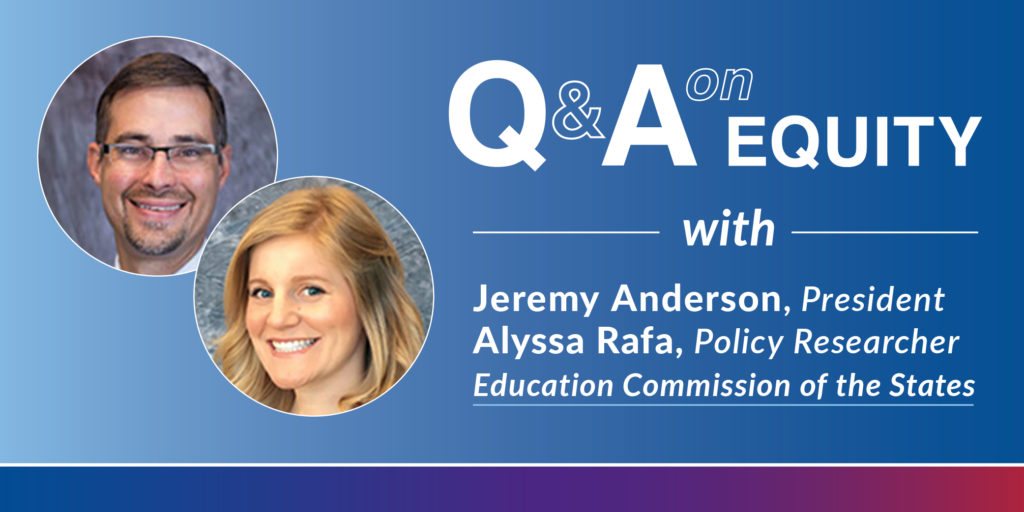

August 21, 2017

A: A lot is changing in education policy across the nation, but one thing remains the same, the idea
that all students should be afforded the opportunity to develop the knowledge and skills necessary
to achieve their future goals. While this is the goal for our country, inequities in the education system continue to stifle opportunities for many students to achieve their potential. State policymakers should harness their power and demonstrate their commitment to addressing this problem by implementing equity-focused policies.
Educational equality means that all students receive equal access to the same educational pathways. While this is a laudable goal, simply leveling the field is not enough. States should strive for equity in educational opportunities by providing all students with the unique supports they need to succeed.
To address systemic inequities, education leaders must first understand that diverse students have diverse needs. A focus on equity takes into consideration the varying personal experiences and social identifiers that impact students’ educational opportunities, including race, gender, ethnicity, socioeconomic status, disability, family background and others. States have the power to advance educational equity by strategically targeting resources and crafting policies that directly address opportunity gaps and challenge the status quo.
A: Education Commission of the States supports states in identifying their equity needs and bringing together thought partners across the education field to better understand, develop and implement decisions that improve opportunities for all students. To move the needle on equity in education, state policymakers may consider focusing on policy assessment and development across four pillars of work: teaching and leading, learning and transitioning, measuring and improving, and financing. While there are several potential areas for consideration related to equity under the Every Student Succeeds Act (ESSA), the following questions provide some guidance for policymakers on where to start their approach.
A: In the recent publication, Equity in Education: Key Questions to Consider, Education Commission
of the States outlines several potential areas of consideration for policymakers looking to improve education equity in their state through ESSA and across the P-20 spectrum. While there are several specific areas of work to consider, overall, state leaders should focus on providing students with the best chance at success in school and beyond by asking themselves:
“Does our state tailor and target supports to students based on their diverse and specific needs—as opposed to simply providing equal supports to all students?” This question shifts the focus from educational equality to educational equity; this shift is key to providing all students with the opportunities they deserve.
For states to grow their workforce to meet 21st century demands, they must provide every student
with the opportunity to develop the knowledge and skills necessary to achieve their future goals.
The successful growth of a state workforce and economy will require more than equality of education,
it will necessitate that equity is a priority of all state education policies.